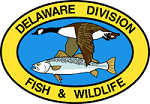Search Level: Standard
Search Term(s): Sambucus canadensis (1 record found)
Search Term(s): Sambucus canadensis (1 record found)
VIBURNACEAE
Viburnum Family
Viburnum Family
Sambucus canadensis (American elderberry)
[ + ]
Synonym
--
Carex Section
--
Meaning of Scientific Name
Sambucus: named for the sambuca, a stringed instrument made from the elder wood; canadensis: of or from Canada and North America
Native Plant
Yes
Life Form
Perennial Shrub
Phenology (Flowering Period)
June
Physiographic Province
☑ Piedmont
☑ Coastal Plain
County Distribution
☑ New Castle
☑ Kent
☑ Sussex
Habitat
Open swamps and seeps, wet meadows and marshes
State Status
Common
Piedmont Status
Common
Coastal Plain Status
Common
Global Rank
--
Federal Status
--
Geographic Affinity
--
Species at Limit of Distribution
☐ Northern
☐ Southern
North American Distribution (Non-indigenous Species)
--
Coefficient of Conservatism
4
Invasive
--
Invasive Watchlist
--
Global Origin (Non-native Species)
--
Wildlife Values
Flowers attract a variety of insects.
Wetland Indicator Status
FACW
Medicinal Properties
Parts used: Berries, Flowers. Flowers used internally in tea or tincture form as a children's fever remedy and to stimulate eruption of chicken pox and measles, to inhibit viral replication, and for impetigo. Used topically as a wash for flaky, itchy skin and as a mouthwash to inhibit inflammation and pathogens. Berries used internally as a tea, tincture, or syrup for treating colds, flu and bronchitis. Also used to strengthen veins, capillaries, arteries, and the eyes.
ID Notes
--
Additional Info
--
Habitats in which this plant occurs
Forested Floodplains and Riparian Swamps (Piedmont)Forested Floodplains and Riparian Swamps (Coastal Plain)
Freshwater Shrub Tidal Wetlands
Ponds, Lakes, and Reservoirs (Millponds)
Seepage Slope Closed Canopy Non-tidal Wetland (Piedmont)
Seepage Slope Closed Canopy Non-tidal Wetland (Coastal Plain)
Seepage Slope Open Canopy Non-tidal Wetland (Piedmont)
Photos
[show|hide]
(click on thumbnail for larger view)


